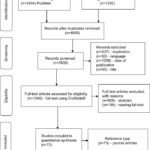Setting up your car in Richard Burns Rally (RBR) can feel like deciphering a secret code, but it’s a crucial step to truly mastering the simulation. While there isn’t a single “magic bullet” setup, understanding the fundamentals and how they interact with your driving style is key. This guide will walk you through the essential aspects of RBR car setup, drawing from community knowledge and practical experience to help you fine-tune your ride.
Many find RBR car setup a complex area, sometimes referred to as a “black art”. It’s true that achieving the perfect setup requires experimentation and understanding. However, the underlying principles are similar to other racing simulations like rFactor or Race On. The RBR manual itself is an excellent resource, providing detailed explanations of each adjustable parameter. For further learning and community insights, the RaceDepartment RBR Setup Forum is invaluable. There, you’ll find discussions and even base setups shared by experienced players, offering a solid starting point for your own adjustments.
Remember, car setup is ultimately personal. What works wonders for one driver might feel completely off for another. Your driving style and the type of controller you use – be it a wheel or gamepad – significantly influence your ideal setup.
From a practical standpoint, especially in the challenging world of RBR, prioritizing stability is often more beneficial than chasing outright speed. Keeping the car predictable and controllable is paramount to completing stages cleanly. Here are key areas to focus on:
Braking System: RBR cars often default to a rear-biased brake setup, which can encourage sliding. However, for increased stability, especially for beginners, shifting the brake bias slightly forward can be advantageous. Reducing overall brake pressure, particularly on slippery surfaces like wet gravel or snow, helps prevent wheel lock-ups and maintain control.
Gear Ratios: Adjusting gear ratios, often towards longer gears, can be effective in minimizing wheelspin. This is particularly useful in powerful cars or on loose surfaces where traction is limited.
Steering Lock: This setting is highly dependent on your controller. Wheel users with a large degree of rotation often benefit from increasing the maximum steering lock to match their physical wheel rotation, allowing for more direct and intuitive steering response.
Anti-Roll Bars (ARBs): The principles here are consistent with other simulations. Softening the front ARB can improve turn-in response, making the car more eager to rotate into corners. However, excessive front ARB reduction can compromise stability, so careful balance is needed.
Suspension Tuning: Suspension settings are exceptionally important in RBR due to the varied and often punishing road surfaces. Experimentation is key to finding a setup that absorbs bumps effectively for each stage. Generally, softer springs, increased ride height, and stiffer dampers can contribute to a smoother ride over rough terrain.
Camber Angles: While in-depth telemetry data isn’t readily available in RBR to precisely analyze tire temperatures, some drivers find reducing camber on slippery surfaces like gravel and snow can improve grip. Like many aspects of RBR setup, this often comes down to trial and error and personal feel.
Ultimately, mastering RBR car setup is a journey of learning and experimentation. Start with understanding the basic principles, explore community resources, and gradually personalize your setup to match your driving style and the challenges of each stage. Remember, consistent stage completion often outweighs chasing the absolute fastest setup, especially as you are learning. Focus on building a stable and predictable car that you can confidently push to its limits.


